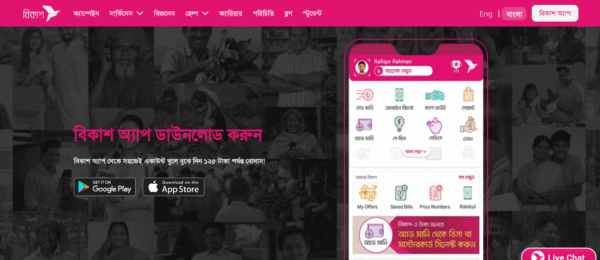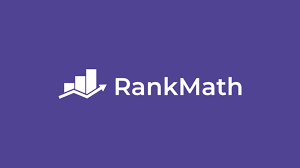Freelancing in Bangladesh: A Digital Lifeline in the Face of Unemployment
Introduction: The Unemployment Challenge
Bangladesh, a nation of over 170 million people, boasts a vibrant economy with remarkable growth in sectors like ready-made garments (RMG), agriculture, and remittances. However, this growth has not been able to keep pace with the sheer number of young people entering the job market each year. Unemployment, particularly among the educated youth, remains a formidable challenge. Official figures often underestimate the problem, which is characterized by a significant skills gap, a limited formal job market, and underemployment.
In this bleak landscape, a powerful, digital-driven solution has emerged: freelancing. More than just a side hustle, freelancing has become a legitimate and transformative career path for hundreds of thousands of Bangladeshis, acting as a critical buffer against unemployment and a driver of socio-economic change.
The Scale of the Opportunity: Bangladesh as a Freelancing Powerhouse
The numbers speak for themselves. For several consecutive years, Bangladesh has been a top-tier performer in online freelancing:
- World Leader: It has consistently ranked 2nd in the world in the Oxford Internet Institute’s “Online Labour Index,” only behind India, which has a population nearly eight times larger.
- Financial Impact: According to the Bangladesh Bank, freelancers contributed over $1.5 billion in remittances between 2021-2022, a figure that is growing exponentially year-on-year. This places the freelance sector ahead of many traditional industries in terms of foreign exchange earnings.
- Platform Dominance: Bangladeshi freelancers are highly successful on global platforms like Upwork, Fiverr, Freelancer.com, and PeoplePerHour, dominating fields like graphic design, web development, digital marketing, and writing.
Why Freelancing is a Perfect Antidote to Unemployment
The freelance model directly addresses several structural causes of unemployment in Bangladesh:
1. Bypassing Geographic and Logistical Barriers:
A young graduate in a rural area like Rangpur or Bagerhat often has to migrate to Dhaka or Chattogram for a job, incurring high costs and immense pressure. Freelancing erases this barrier. All one needs is a decent internet connection and a skill. This has democratized opportunity, allowing talent from every corner of the country to compete in the global marketplace.
2. Overcoming the “Experience” Conundrum:
The formal job market’s vicious cycle—”no job without experience, no experience without a job”—is a major driver of youth frustration. Freelancing platforms allow individuals to build a portfolio from day one. They can start with small, lower-paying jobs to gain reviews and gradually climb the ladder based on merit and delivered quality, not just a CV.
3. Bridging the Skills Gap:
While a university degree might not provide job-ready skills, the freelance economy incentivizes practical, in-demand learning. The motivation to earn pushes individuals to learn specific software (e.g., Adobe Photoshop, WordPress, Python), digital marketing tactics, or SEO writing through online courses, YouTube tutorials, and local training centers. This creates a self-sustaining ecosystem of skill development directly aligned with global market needs.
4. Creating a Meritocratic Ecosystem:
Freelancing, in its purest form, is a meritocracy. A client in New York or Berlin does not care about a freelancer’s family background, university name, or connections. They care about the quality of work, meeting deadlines, and professional communication. This allows raw talent to flourish and be rewarded fairly, often more so than in the traditional job market, where nepotism can be a factor.
The Spectrum of Freelance Work: From Survival to Scalability
The freelance career in Bangladesh can be viewed through different tiers:
- Tier 1: The Entry-Level (Micro-Tasks): This includes data entry, copy-paste jobs, basic image editing, and simple research. It provides a crucial entry point for those with limited skills, offering a vital source of income, often better than many low-paying local jobs.
- Tier 2: The Skilled Professionals: This is the core of the Bangladeshi freelance army. It includes:
- Graphics & Design: Logo design, UI/UX design, illustration.
- Writing & Translation: Content writing, blog posts, translation (Bangla to English and vice versa).
- Web & App Development: WordPress sites, Shopify stores, mobile apps.
- Digital Marketing: SEO, social media management, video editing.
- Voice Over: A surprisingly strong niche for Bangladeshi artists.
- Tier 3: The Agencies and High-Value Consultants: Successful freelancers often scale their operations. They become “agency owners,” forming small teams, outsourcing work to other local freelancers, and taking on larger, more complex projects from international clients. This moves them from being solo earners to job creators.
Challenges on the Path: The Hurdles for Bangladeshi Freelancers
Despite its promise, the freelance journey is fraught with challenges:
- Payment Gateway Issues: Receiving payments is the single biggest hurdle. International platforms primarily use PayPal, which is not available in Bangladesh. Freelancers must rely on indirect methods like Payoneer, Wise (formerly TransferWise), or direct bank transfers, which can be slow, expensive, and sometimes unreliable.
- Unstable Internet Infrastructure: While internet penetration has grown, the quality and reliability of connectivity, especially outside major cities, remain inconsistent. A power outage or slow connection during a client call can cost a project.
- Skill Saturation at the Low End: The entry-level market for basic data entry and graphic design is highly saturated, leading to a race to the bottom on price. The key to sustainable success is moving up the value chain by acquiring niche, advanced skills.
- Lack of Financial Literacy and Planning: Income can be irregular. Many new freelancers struggle with managing fluctuating income, saving for taxes, and planning for retirement without the safety net of a corporate job.
- Social and Mental Pressures: Freelancing is still not seen as a “real job” by many conservative families. The isolation, irregular hours, and stress of finding the next project can lead to anxiety and burnout.
The Way Forward: Sustaining the Revolution
For freelancing to continue being a powerful tool against unemployment, a concerted effort is needed:
- From the Government: Initiatives like the “Hi-Tech Park Authority” and “Learning and Earning” projects are steps in the right direction. Further support in the form of standardized training curricula, subsidized high-speed internet for freelancers, and, most critically, negotiating with PayPal or developing a robust local alternative is essential.
- From Educational Institutions: Universities should integrate practical, freelance-oriented skills into their curricula—modules on digital communication, personal branding, and financial management for freelancers.
- From the Community: Established freelancers must mentor newcomers. Communities like “e-Freelancers Bangladesh” on Facebook play a vital role in knowledge sharing and support.
- From the Freelancers Themselves: A continuous focus on upskilling is non-negotiable. The goal should be to move from competing on price to competing on quality and expertise.
Conclusion: More Than Just Income; It’s Empowerment
Freelancing in Bangladesh is no longer just an alternative; for many, it is the primary hope. It has done more than just provide an income; it has fostered a sense of empowerment, global citizenship, and entrepreneurial spirit among the youth. It has been proven that a young person in Dinajpur can have a client in Silicon Valley and that talent, when given the right platform, can overcome even the most stubborn structural barriers like unemployment.
While challenges remain, the freelance revolution has already irrevocably changed the career landscape of Bangladesh. It stands as a powerful testament to how a nation can leverage its demographic dividend and digital connectivity to not just find jobs, but to create them, one gig at a time.











